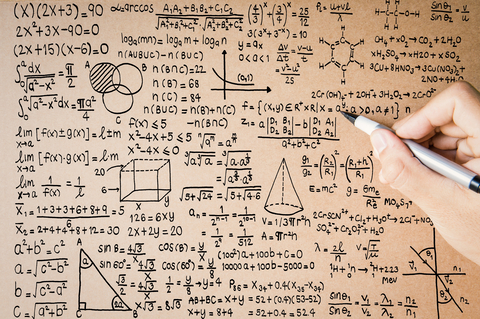The Mathematics of Mystery
Some novelists are all but born knowing they should write. Some study literature, or creative writing, become experts is the academic form of the art. Some belong to families of writers and words are their legacy.
But not me.
I came to writing via the scenic route, completely oblivious to the fork in the road ahead which would lead me into this life. Before I was a writer, I was a lawyer. Before that, I thought I wanted be an Astrophysicist. Indeed, it took me about a year at University, enrolled in what I have come to think of as the “Big Bang Theory” stream, to realise that I didn’t … and, in that time, I sat through a lot of pure and applied mathematics classes.
I might bemoan those lost hours spent trying to prove one plus one equals two from first principles—actually more involved than you’d think—but I have come to realise that everything that went before I decided to write is at least material, and sometimes, more than that. Sometimes what came before becomes technique.
Now people appear to easily see the connection between the practise of law and that of writing fiction, though I’m not sure the profession would welcome the correlation. One doesn’t want to create the impression that lawyers make things up! My background in mathematics, however, seems at first glance a less natural precursor to storytelling. And yet, it is probably the greater influence on my work.
In terms of material, mathematics gave me very little, aside from the fact that I could well imagine that some of my classmates kept a couple of bodies in their refrigerators for company. Aside from that, a knowledge of Gaussian curvature and set theory does not really contribute much to a plot and even less to the development of character.
But that year wrangling numbers did teach me a couple of things which are crucial to my work as a mystery writer.
Firstly, it ingrained the concept of logical thinking, the idea that proposition A can exist if, and only if, proposition B existed first. This thinking is of course the kind of inductive logic we have come to regard as deductive reasoning, which is, in turn, essential for a mystery plot to hold together.
Secondly, and perhaps more importantly, it taught me where the interests of mathematics and that of storytelling diverge.
One of the first things you learn in the study of mathematics is that there are many ways to arrive at the one solution and sometimes there are in fact many solutions to the one problem, all of which are “correct”. A solution can involve a hundred pages of working, or be achieved in three elegant lines.
For a mathematician it is the elegant solution that is the holy grail. It is the territory of the truly gifted, who can glance at a string of symbols and numerals to recognise the heart of an equation, and then know how to extract that heart with surgical precision. I remember those students… twenty minutes after the three hour exam began they would put down their pens and sit smiling at the rest of us as we scribbled frantically, content in the knowledge that they were a species more evolved. They were probably also the ones with the bodies in their refrigerators.
I think in my entire mathematical career I came up with an elegant solution only once, and that was more accident than design. My answers were generally of the hundred page variety, multiple routes to reach a solution which stopped at dead ends, attempts to use theorems that did not fit, pages of increasingly panicked scrawl, ink smeared with tears and sweat and blood, until finally, exhausted and broken, I battered out a solution that was probably correct, but definitely not elegant.
But you see, it turns out that I’m a storyteller not a mathematician.
In the inelegant solution lies the story. A tale of valiant attempt, of heartbreak, frustration and perseverance, sometimes of failure. There is none of that in the brilliant three line epiphany. The stylish solution is likely a work of genius, possibly poetry, but it is not a story. For that, there must be those untidy attempts, those many pages of not knowing, and above all, a fear of failure.
So that misspent part of my youth spent studying mathematics taught me not only how to solve the puzzle (eventually), but the value of not doing so too cleanly. It showed me how to embrace the struggle that the genius never knows. And that is the art of the mystery writer.
Bio – Sulari Gentill
A reformed lawyer, Sulari Gentill is the award-winning author of the Rowland Sinclair Mysteries, which chronicle the life and adventures of her 1930s Australian gentleman artist, and the Hero Trilogy, based on the myths and epics of the ancient world. She lives on a small farm in the foothills of the Snowy Mountains of New South Wales, where she grows French Black Truffles and writes about murder and mayhem. Sulari has won and been shortlisted in many awards including: the Commonwealth Writers’ Prize, the Australian Book Industry Awards, the Davitt Awards, the Ned Kelly Awards, and the Scarlett Stiletto Awards. She was the inaugural Eminent Writer in Residence at the Australian Museum of Democracy. Most recently, Crossing the Lines, an unusual postmodern mystery (which will be released in the US in April 2020 as After She Wrote Him) won the 2018 Ned Kelly Award for Best Crime Novel. Give the Devil His Due, the 7th in Rowland Sinclair Mysteries will be released in the US in January 2020.

